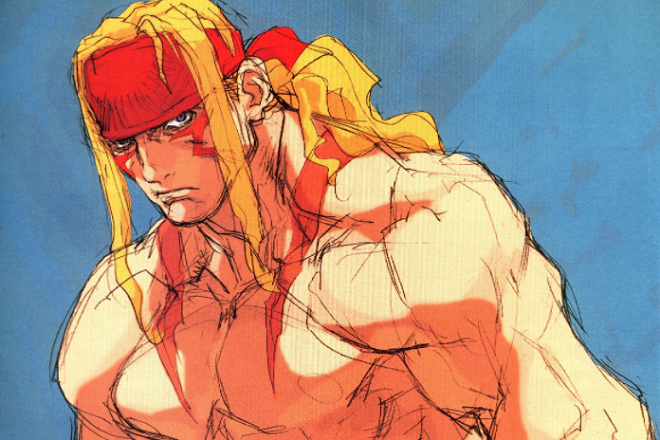The Impact of Street Fighter III’s Development Drama
The Polygon series of oral history features detailing the creation processes behind the individual Street Fighter series have all been great reads. Of those they were covering, though, the Street Fighter III series history was bound to be the most interesting given info previously known about its rocky development. The production periods for the original Street Fighter, Street Fighter II, and the Street Fighter Alpha series weren’t quite as drama-filled compared to SFIII’s due to how grandiose plans for the game were. The Polygon piece for this one, the newest in the series, delivers harder than I could have expected. It confirmed several outstanding rumors that have circulated around the internet for decades now.
The very idea for a Street Fighter III was risky at the time. It pushed the limits of a 2D fighter, containing the most beautifully-animated sprites to ever grace a video game. But it was coming at a time when the market had moved on to 3D fighting games, when the likes of Tekken 2 and Virtua Fighter 2 were the hottest around, and had often looked down on newer 2D games. (I’m especially looking at you, Next Generation magazine.) That’s not even getting into the new cast, where the only returning characters were Ryu and Ken.

The original plan for the game was even riskier. It started development as a new IP called “New Generation,” the anecdote for which confirmed rumors that not even Ryu and Ken were originally planned to return. The piece didn’t get into the other aspects of that rumor, which said Yang was planned to be a unique character in the first SFIII title instead of a Yun clone and that Hugo was planned for this title — both of which were introduced in Street Fighter III: 2nd Impact. I’d be surprised if that wasn’t also true considering data for Hugo was found in New Generation’s files. The final game kept “New Generation” as its subtitle, and Alex as the main character.
The game, to no surprise, had to be part of the Street Fighter series in the end given not only the aforementioned risks involved, but how long it was in the works. New Generation took three years to complete and around $8 million to fund, a lengthy period and high budget for a 1990s title. It was enough time for the market to shift from favoring 2D games to embracing 3D as the new hotness. Drawing all those detailed sprites took a lot of work, even for a cast of only eleven characters (including non-playable final boss Gill), and animation reuse across Ryu, Ken, and Sean and Yun and Yang being clones.
There were, somehow, further development complications previously unknown. The team working on the game wasn’t that familiar with fighters, and were initially indecisive about what kind of game they wanted this to be. The fighting game veterans still at Capcom were either working on the Street Fighter Alpha or Darkstalkers titles at the time, before they could assist with finishing this game. All of these behind-the-scenes issues illuminate how disappointing it was for Capcom that the game came up short in terms of the number of arcades that wanted machines compared to those from the SFA and Marvel vs. titles at the time.
It didn’t help that the game couldn’t be ported to home consoles when it first released, due to the detailed sprites and the CPS-III arcade system being impossible for them to replicate. They couldn’t even run on the Sega Saturn with the ROM expansion cartridge, which it needed to play the Capcom Marvel games. It took until Dreamcast for the first two SFIII games to come home, a console that itself undeservedly underperformed. Talk about a cursed series.

The Street Fighter III series received three iterations, New Generation, 2nd Impact, and 3rd Strike, all of which received new characters, stages, and balance adjustments. 3rd Strike was, to no surprise, the more refined product of the three. Despite their quality and presentation, the SFIII series — particularly 3rd Strike — didn’t achieve cult classic status until that particular Evo Moment was etched into the memories of the fighting game community at large, five years after it released. Until then, it was considered a series of titles that didn’t take off with an audience who found the cast unappealing compared to those from the SFII games and found them difficult to learn.
Capcom never profited on the SFIII titles, and this marked the beginning of the end for their 2D efforts. It also marked a temporary end for Street Fighter as a whole until Street Fighter IV in 2008, the first internally-developed SF title not to use sprites. Yet, it’s still worth cherishing what we lost to time. We will never see a 2D fighting game, or, hell, 2D game, with sprites this detailed again.
It’s yet another good Polygon piece on the history of Street Fighter development, a series I hope isn’t over. All the talk about 3D games being the new hotness in the mid-to-late 1990s has me hoping they’ll tackle the 3D Street Fighter experiment performed around that time: The Street Fighter EX series. Arika developed it instead of Capcom, though the latter has recently acknowledged the series (and, in a way, Fighting EX Layer) on a number of occasions, and developers have been part of these features thanks to being Capcom expatriates. They’ll hopefully be as open to talking about their development process.





